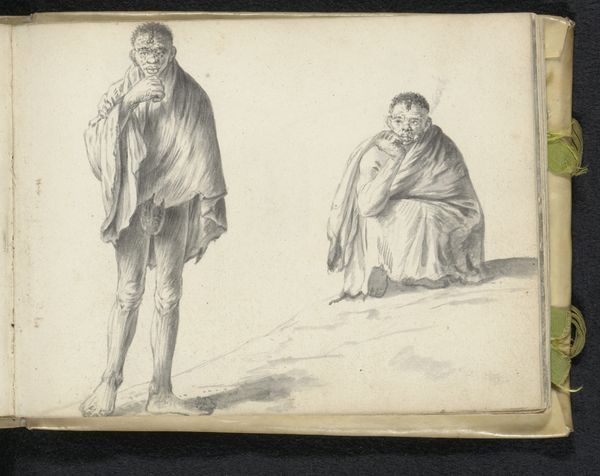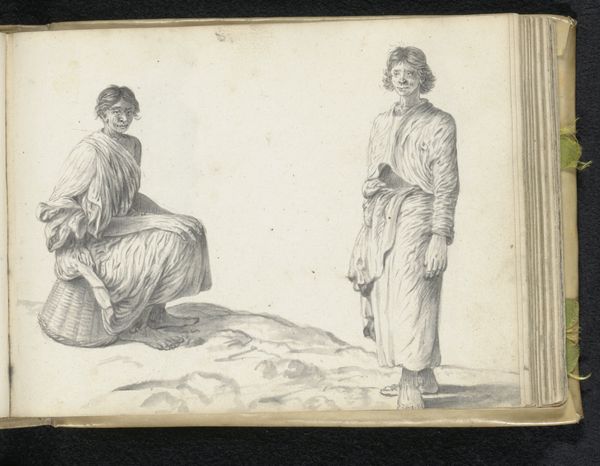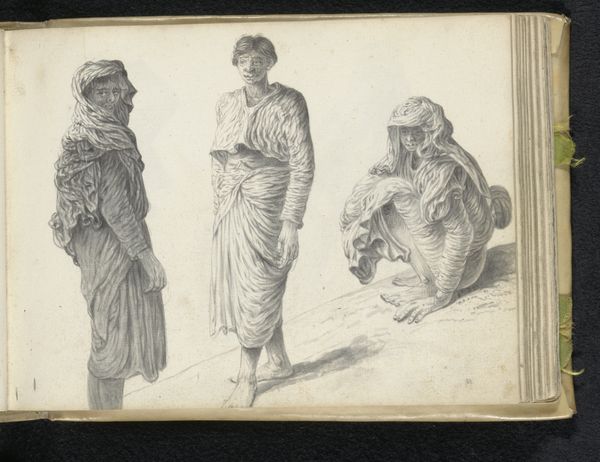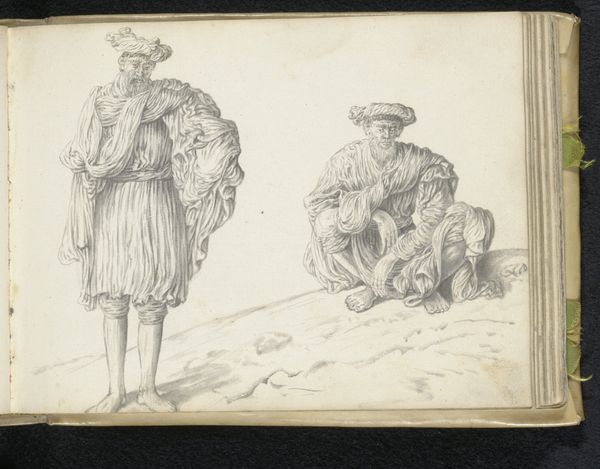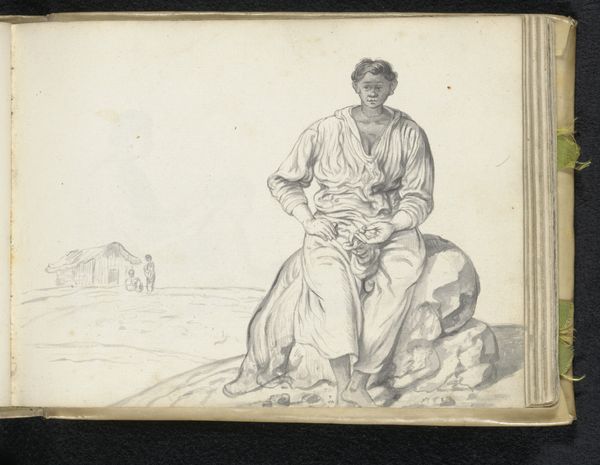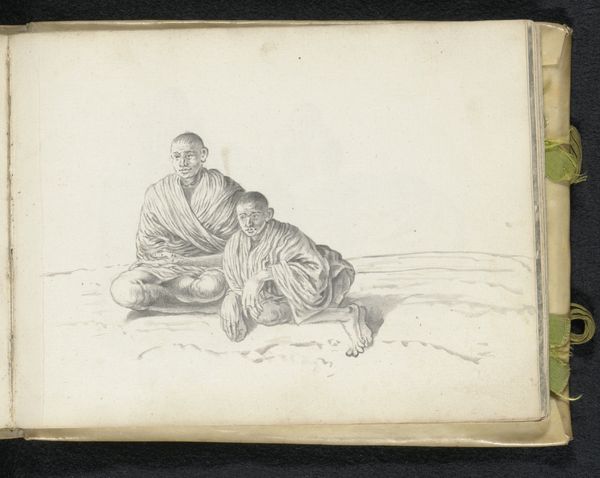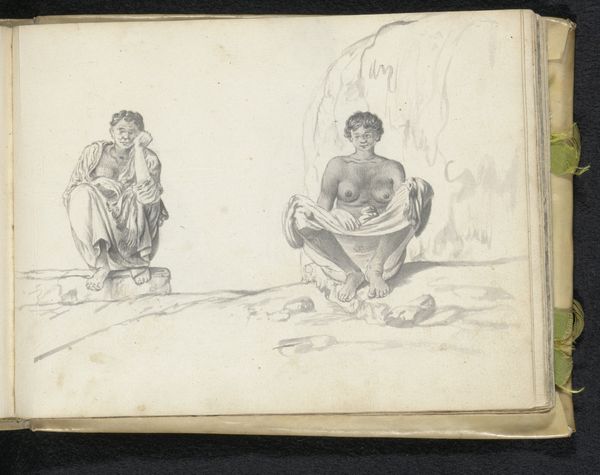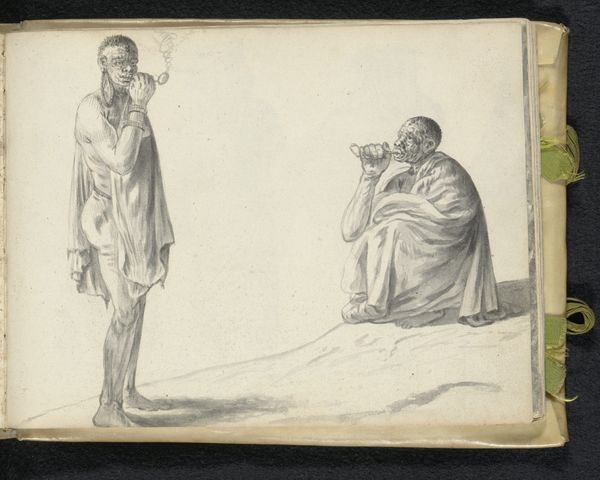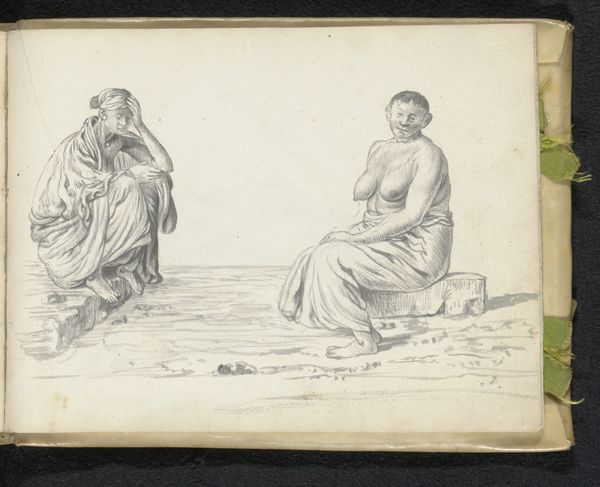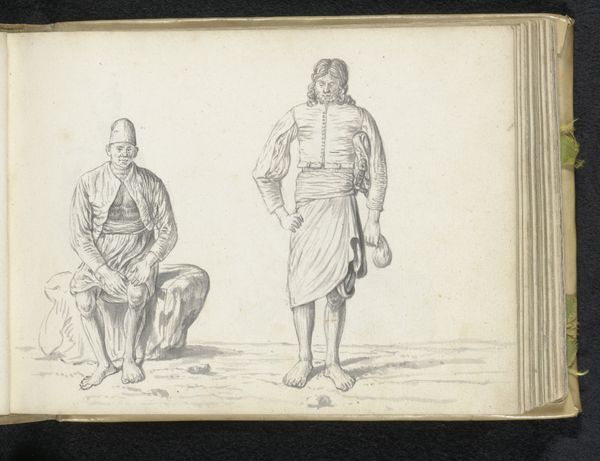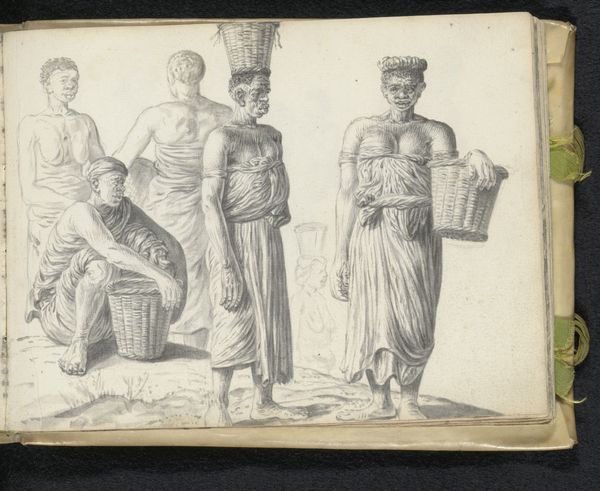
drawing, paper, pencil
#
portrait
#
drawing
#
aged paper
#
toned paper
#
light pencil work
#
dutch-golden-age
#
pencil sketch
#
sketch book
#
figuration
#
paper
#
personal sketchbook
#
coloured pencil
#
pencil
#
line
#
sketchbook drawing
#
genre-painting
#
storyboard and sketchbook work
#
sketchbook art
Dimensions: height 148 mm, width 196 mm
Copyright: Rijks Museum: Open Domain
Curator: This is Esaias Boursse’s "Two Women at a Roadside," a pencil drawing from 1662. What strikes you initially about this sketch? Editor: The texture. I am intrigued by the artist’s conscious use of delicate pencil work on what seems to be aged, perhaps toned paper. It has a raw and personal sketchbook quality. Curator: Indeed. Observe how Boursse employed a linear style. The loose lines define form, create a sense of volume and establish a subtle contrast between light and shadow, notably in their draped clothing. Editor: Do you think it fair to say it is a fairly unsentimental snapshot? The women seem posed, but somewhat realistically—maybe reflecting the social conditions in the Dutch Golden Age. Curator: Possibly, but it's more than just observation; there is almost an intimate knowledge suggested through line work itself. Consider the V-neck opening as a form: it structures a focal point—as much about material conditions, it defines shape. The draped material is sketched very deftly and rapidly but is clearly meant to draw in the eye. Editor: Good point. Perhaps Boursse uses them almost as representative types. They are individuated yet somewhat universal—which makes me think of broader socio-economic factors at play during that time. Was he commenting on women's roles or societal expectations? Curator: Interesting to read that commentary in these lines... Alternatively, we can read the form as Boursse exercising pure draughtsmanship in creating volume—an exploration of how light interacts on fabric and figure. Editor: All art making is to some extent a cultural artefact. Isn't isolating it merely to form, a neglect of any wider context and thus meaning? Curator: Not neglect, but an appreciation of how internal construction makes the work self-contained as an expressive piece. This drawing encapsulates that unity. Editor: Ultimately, a single sketchbook page invites contemplation on individual subjectivity as well as socio-historical dynamics, no? Curator: Absolutely, and analyzing Boursse's technique is key in appreciating how that all comes together in this singular drawing.
Comments
No comments
Be the first to comment and join the conversation on the ultimate creative platform.
